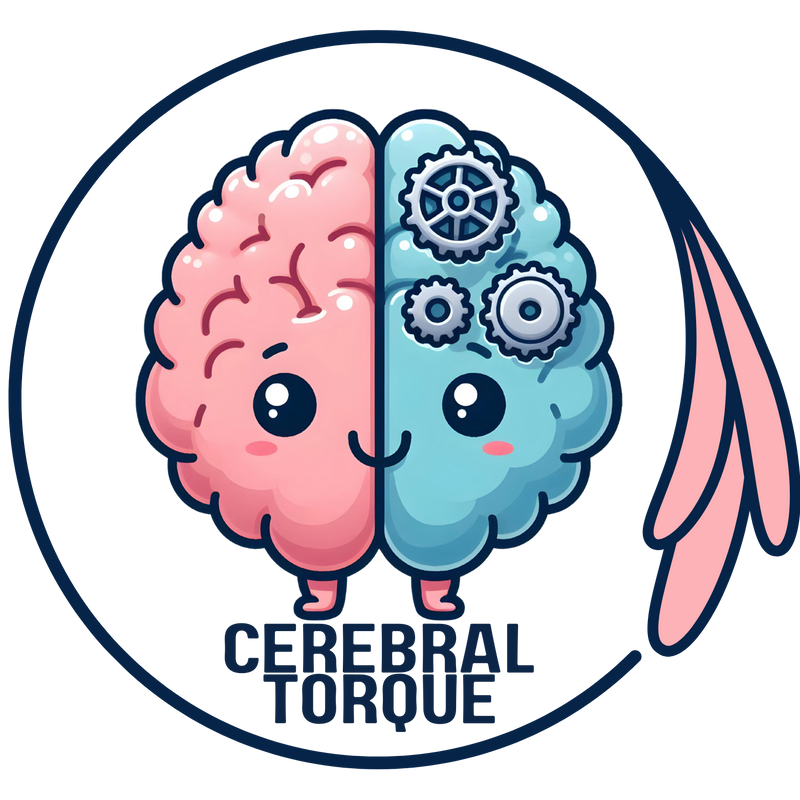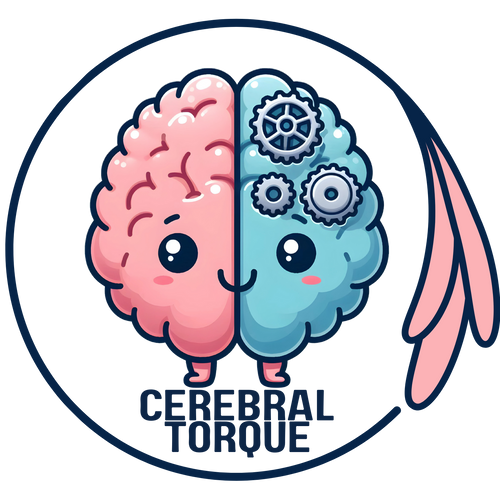Primary Stroke Prevention in the Migraine Patient
Posted on May 12 2025,
Migraine & Stroke Prevention
Understanding the Migraine-Stroke Connection
If you live with migraine, especially migraine with aura, you should be aware of the increased risk of stroke associated with this neurological condition. According to the 2024 American Heart Association (AHA) and American Stroke Association (ASA) guidelines for primary stroke prevention, migraine has been identified as an emerging risk factor for stroke.
The Migraine-Stroke Risk Connection
Epidemiological evidence shows a positive association between migraine, particularly with aura, and ischemic stroke. This is especially true for women with migraine with aura, who may experience approximately double the risk compared to those without migraine.
The relationship between migraine and stroke involves complex interactions of genetic, vascular, and hormonal factors. While the link to ischemic stroke is well-established, the connection to hemorrhagic stroke remains less conclusive.
What is Primary Stroke Prevention?
Primary prevention of stroke refers to interventions aimed at preventing the first occurrence of a stroke in individuals who have never experienced one. The most effective way to reduce the occurrence of a stroke-related death is to prevent the first stroke. This approach involves regular health screenings, identifying risk factors, lifestyle intervention, and medication when indicated.
Risk Assessment for Migraine Patients
The 2024 guidelines specifically recognize migraine as a condition that increases stroke risk and recommends that all adults aged 18 to 64 years with migraine (with or without aura) should undergo evaluation and modification of vascular risk factors to address this elevated risk.
Special Recommendations for Migraine with Aura
- Adults with migraine with aura who desire contraception should use progestin-only or nonhormonal forms to avoid the increased risk of ischemic stroke associated with combined hormonal contraception.
- Women with specific stroke risk factors (age >35 years, tobacco use, hypertension, or migraine with aura) should consider progestin-only or nonhormonal contraception to prevent increased stroke risk associated with estrogen-containing contraception.
Life's Essential 8: Core Prevention Strategies
The 2024 stroke prevention guidelines align with the American Heart Association's Life's Essential 8 framework for cardiovascular and brain health. These eight components form the foundation of stroke prevention for everyone, including migraine patients:
Diet Recommendations
The 2024 guidelines specifically recommend the Mediterranean diet for stroke prevention, even for adults with no prior cardiovascular disease. This dietary pattern has shown significant benefits in reducing stroke risk, especially when supplemented with nuts and olive oil.
For migraine patients with hypertension, the guidelines also note that salt substitution may be helpful for certain older adults who have uncontrolled blood pressure, which is particularly relevant as hypertension can further increase stroke risk in migraine patients.
Physical Activity & Sedentary Behavior
Physical activity is essential for cardiovascular health and stroke risk reduction. The 2024 guidelines highlight the importance of both regular exercise and avoiding prolonged sedentary behavior.
Physical Activity Recommendations
- Aim for at least 150 minutes of moderate-intensity aerobic activity per week, or 75 minutes of vigorous-intensity activity, or a combination of both
- Include muscle-strengthening activities at least twice per week
- Break up periods of sedentary behavior during waking hours
- Even light activity is better than no activity
The new guidelines specifically address sedentary behavior, recommending screening for it and counseling patients to avoid being sedentary. This is particularly important for migraine patients who may sometimes limit activity during or following an attack.
Blood Pressure Management
Blood pressure control is critical for stroke prevention, especially for migraine patients. Hypertension can compound the stroke risk already associated with migraine.
The 2024 guidelines recommend two or more antihypertensive medications for primary stroke prevention in most patients who require pharmacological treatment of hypertension, as studies show that single medication approaches often fail to achieve blood pressure goals.
Work with your healthcare provider to develop an appropriate blood pressure management plan, especially if you have migraine with aura, as this combination significantly increases stroke risk.
Hormonal Considerations for Women with Migraine
Hormonal influences significantly impact both migraine pathogenesis and stroke risk, requiring special attention for women with migraine.
Hormonal Risk Factors
The 2024 guidelines identify several hormone-related conditions that increase stroke risk, including:
- Premature ovarian failure (before 40 years of age)
- Early-onset menopause (before 45 years of age)
- Endometriosis
- Use of estrogen-containing contraceptives, especially in the presence of migraine with aura
The guidelines recommend screening for these conditions as part of stroke risk assessment. For women with migraine with aura who need contraception, progestin-only or nonhormonal methods are strongly recommended to avoid the increased stroke risk associated with estrogen-containing options.
Special Population: Transgender Women
Transgender women taking estrogens for gender affirmation have been identified as having an increased risk of stroke. Evaluation and modification of risk factors could be beneficial for stroke risk reduction in this population, especially if they also experience migraine.
Other Important Preventive Measures
The 2024 guidelines highlight the importance of a comprehensive approach to stroke prevention, addressing all modifiable risk factors simultaneously rather than focusing on just one or two aspects.
Regular Healthcare Visits and Screening
From birth to old age, every person should have access to and regular visits with a primary care health professional to identify and achieve opportunities to promote brain health. This is especially important for migraine patients.
Recommended Screenings for Migraine Patients
- Regular blood pressure monitoring
- Lipid profiles
- Blood glucose testing
- Assessment of vascular risk factors
- Screening for social determinants of health that may impact access to care
- For women: screening for pregnancy complications, premature ovarian failure, early menopause, and endometriosis
The earlier we embrace primary prevention, the better your health outcomes. Don't wait until age 50 for your first doctor visit. By discussing risk factors with clinicians sooner, you can address them promptly and significantly reduce your stroke risk.
Innovations in Stroke Prevention
The 2024 guidelines highlight several advances in stroke prevention that may be particularly relevant for migraine patients:
Emerging Treatments and Approaches
- GLP-1 Receptor Agonists: Shown to be effective not only for managing type 2 diabetes but also for weight loss and lowering cardiovascular disease and stroke risk
- PCSK9 Inhibitors: Effective at lowering LDL cholesterol and potentially reducing stroke risk
- Advanced Approaches to Blood Pressure Control: Recognition that most patients require multiple medications for optimal control
- Comprehensive Approach to Social Determinants of Health: Acknowledging the impact of non-medical factors on stroke risk
Summary of Stroke Prevention for Migraine Patients
This table summarizes the key recommendations from the 2024 AHA/ASA Guidelines for Primary Prevention of Stroke, with specific focus on migraine patients.
| Category | Key Recommendations |
|---|---|
| Risk Assessment |
For migraine patients:
|
| Diet & Nutrition |
|
| Physical Activity |
Recommended weekly activity:
|
| Blood Pressure Management |
|
| Hormonal Considerations |
For women with migraine:
|
| Additional Prevention |
|
Recognizing Stroke Warning Signs
Even with the best prevention efforts, it's crucial for migraine patients to be able to recognize the warning signs of stroke, which require immediate emergency care.
FAST: Stroke Warning Signs
- F - Face drooping: Does one side of the face droop or is it numb?
- A - Arm weakness: Is one arm weak or numb?
- S - Speech difficulty: Is speech slurred, are they unable to speak, or are they hard to understand?
- T - Time to call 911: If someone shows any of these symptoms, even if they go away, call 911 and get them to the hospital immediately.
For migraine patients, it can sometimes be challenging to distinguish between migraine aura symptoms and stroke symptoms. If there is any doubt, or if symptoms are different from your typical migraine experience, treat it as an emergency and seek immediate medical attention.
Remember: "The most effective way to reduce the occurrence of a stroke-related death is to prevent the first stroke."
References
- Bushnell C, Kernan WN, Sharrief AZ, et al. 2024 Guideline for the Primary Prevention of Stroke: A Guideline From the American Heart Association/American Stroke Association. Stroke. 2024;55(12):e344-e424.
- Ravi V, Osouli Meinagh S, Bavarsad Shahripour R. Reviewing migraine-associated pathophysiology and its impact on elevated stroke risk. Front Neurol. 2024;15:1435208.
- American Heart Association. New guideline: Preventing a first stroke may be possible with screening, lifestyle changes. Published October 21, 2024.
- Mathew J. Perspective on the 2024 Guideline for the Primary Prevention of Stroke. Cardiology Today. 2024.
- Liao CC, Chien CH, Shih YH, Tsai FJ, Li JM. Acupuncture is effective at reducing the risk of stroke in patients with migraines: a real-world, large-scale cohort study with 19-years of follow-up. Int J Environ Res Public Health. 2023;20:1690.
- American Heart Association. What migraine sufferers need to know about stroke risk. May 13, 2022.
- American Heart Association. Life's Essential 8: Cardiovascular Health for All. 2024.
Wed, Dec 17, 25
Migraine Management During Pregnancy, Breastfeeding, and Pregnancy Planning
This guide provides comprehensive, evidence-based recommendations for migraine management throughout the reproductive journey.
Read MoreMon, Nov 17, 25
Migraine Research - During the week of my absence.
Migraine Research - During the week of my absence. The Association Between Insomnia and Migraine Disability and Quality of Life This study examined how insomnia severity relates to migraine disability...
Read MoreSat, Nov 01, 25
Anti-CGRP Monoclonal Antibody Migraine Treatment: Super-Responders and Absolute Responders and When to Expect Results
Anti-CGRP monoclonal antibodies achieved 70% super-response and 23% complete migraine freedom in a one-year study. Most dramatic improvements occurred after 6 months of treatment. For patients with chronic or high-frequency...
Read More


